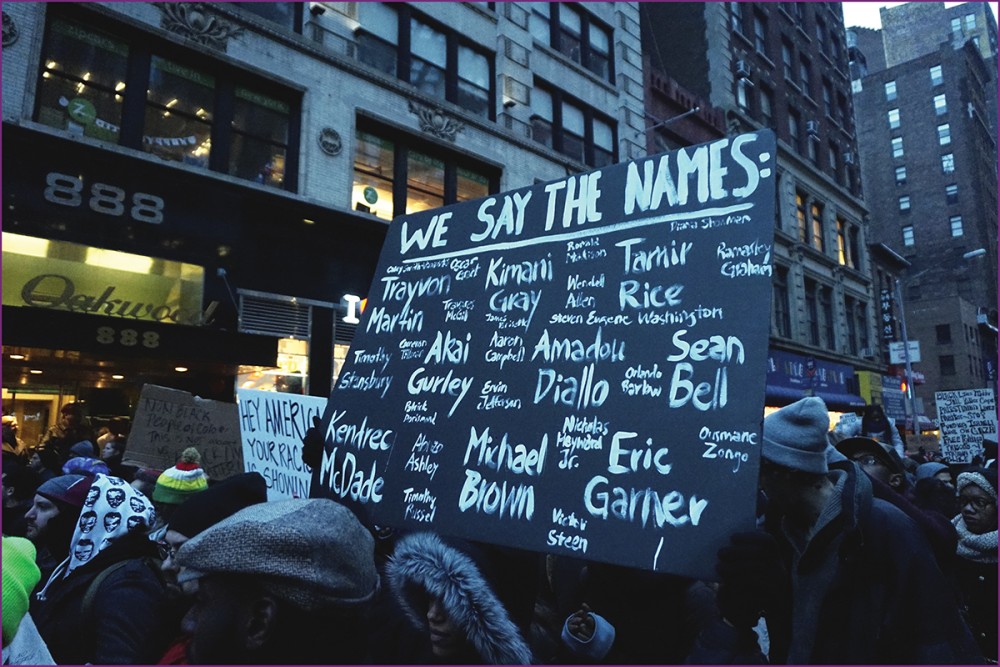How do we remember people killed by police?
Call their names. Tell their stories. Confess our role.

Our little congregation files out onto the sidewalk in front of our small storefront church at 304 Bond Street, in Brooklyn, holding lit candles and signs. Two weeks ago, Michael Brown was shot by the police in Ferguson, Missouri. Singing, we walk in procession up to Smith Street, where we’re met by the stares of diners at sidewalk cafes. We curl around the corner past the Gowanus Houses. One resident lifts his fist in solidarity. Others ignore us.
Our act of remembrance feels small in the face of an overwhelming problem. A dozen of us, walking along, singing. But I need to do something. I need to say no with my body, and my congregants need to as well. For the next four weeks we sing and walk, knowing that more work is coming.
On a bright Monday morning in my small apartment, I unroll a sheet of brown wrapping paper on the floor. I weigh down the corners with Bibles and write “Black Lives Matter” across the top in big block letters. I want to connect young Michael’s death to our own city’s legacy of police violence—to show that this is a systemic problem, not an isolated incident. I open my laptop and begin searching for stories of black and brown people in New York City killed by the police.





